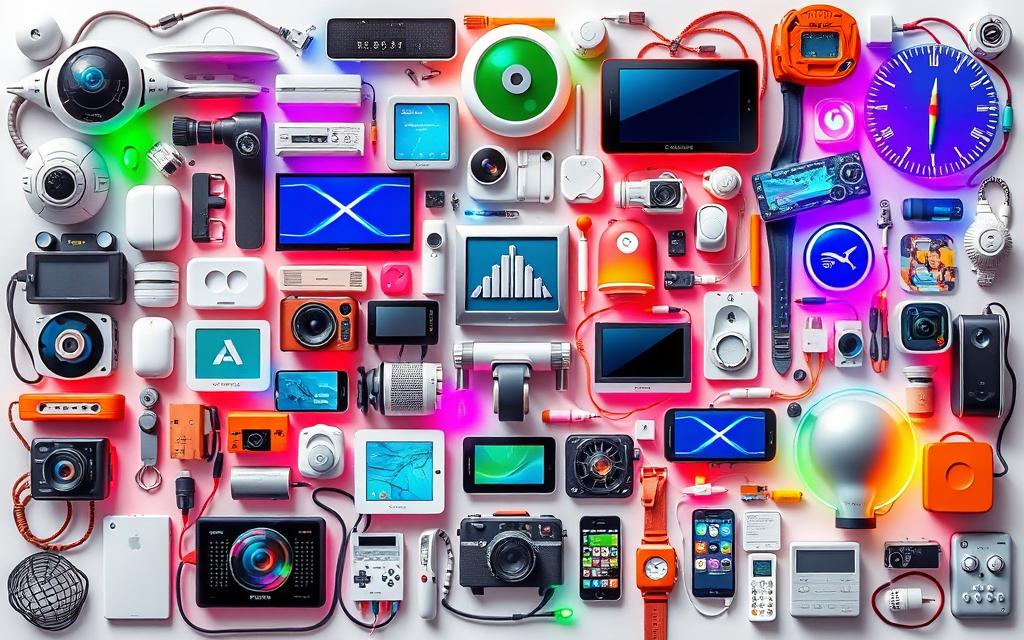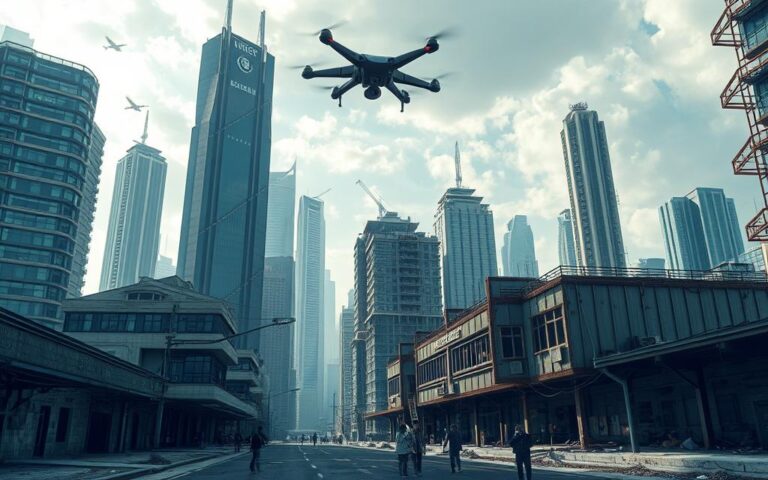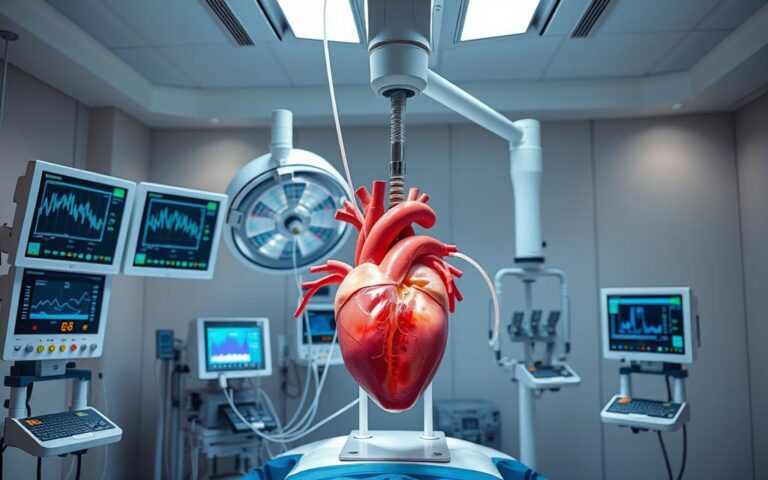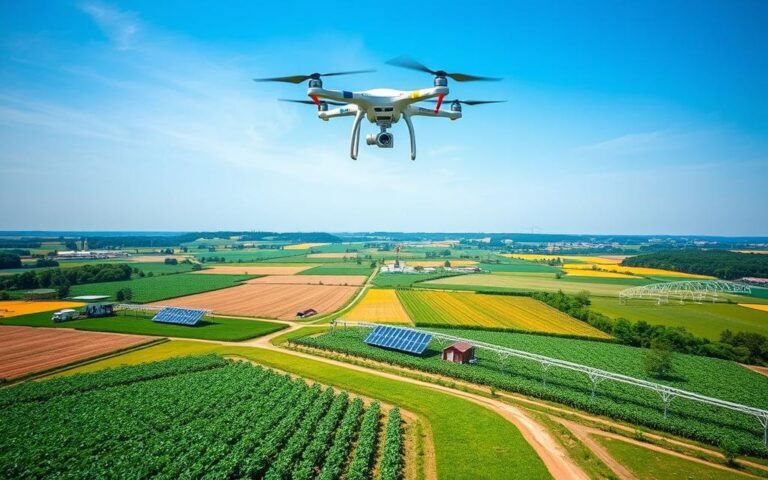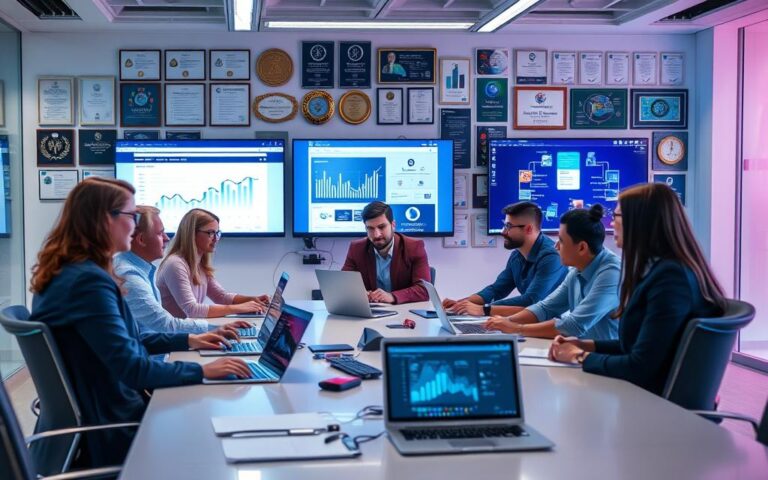Different Forms of Technology and Their Uses
Technology is everywhere in our lives, changing how we interact at home and work. It’s important to know about the different types of technology. This knowledge helps us make better choices and understand the digital world better.
Choosing the right devices and understanding how technology works is key. In today’s world, knowing how technology affects us is crucial. It helps us stay ahead in a world full of information.
As we explore new technologies, we see how they can help us grow and innovate. For example, virtual field trips with Google Cardboard can make learning fun and affordable. Keeping up with technology trends is vital for a more informed and active society.
Understanding Technology
In today’s fast-paced world, knowing what technology is is key. It’s about using science to solve human problems. Over time, we’ve developed tools and systems that change how we live and interact.
Getting to know technology helps us see its big impact. It opens doors to learning more about its effects.
Definition of Technology
The definition of technology covers a lot. It’s not just about machines and gadgets. It’s also about the systems that make us better at things.
From simple tools to advanced robots, technology keeps getting better. It’s all about meeting our needs in new ways. Looking at how tech has evolved shows its importance in making our lives better.
Importance in Everyday Life
Technology is a big part of our daily lives. It helps us connect, learn, and work better. For example, tech lets us talk to people all over the world with just a phone or the internet.
In healthcare, tech has led to big improvements. It shows how science can really help society.
Technology touches many areas of life, from farming to fun. As we keep using these new tools, knowing about them helps us understand their role in our future.
| Aspect | Impact |
|---|---|
| Communication | Enables instant connections worldwide |
| Healthcare | Advancements improve treatment and efficiency |
| Education | Enhances learning through digital platforms |
| Transportation | Innovations redefine travel methods |
Information Technology
Information Technology (IT) is key for organisations, making their work smooth and efficient. IT roles cover many tasks that help businesses run well and grow. These roles are vital for the success of business projects and technological advancements.
Role and Functions
IT teams do many important jobs, helping with communication and teamwork across different areas. They work on keeping systems running, helping users, and following rules. Some well-known IT jobs include:
- Computer and Information Systems Managers
- Cloud Engineers
- Cybersecurity Engineers
- Data Scientists and Analysts
- Software Developers
The IT team is crucial for getting to information and making things work better with data systems. Important business tasks like making products and helping customers depend on good IT management.
Growing Impact
The world of IT is always changing, shaping how businesses work. IT’s role is bigger than ever, thanks to data-driven decisions. New tech like cloud computing, big data, and security show this growth. By 2020, tech jobs had grown to 12.1 million, showing a big increase in IT jobs.
Investing in IT boosts productivity and efficiency. It also encourages innovation, creativity, and connection. As companies use technology more, they set the stage for a future where IT is essential for success in many fields.
Communication Technology
In today’s world, communication technology has changed how we talk to each other. Smartphones and social media have made it easy to share and connect instantly, no matter where you are.
Modern Communication Tools
Many new tools have shaped modern communication. Social media like Facebook and Instagram let us share photos and videos right away. Email, once just for work, is now key for business talks. Video calls on Zoom have made it easy to talk face-to-face from anywhere.
- Social Media (e.g., Facebook, Instagram, Twitter)
- Email and Instant Messaging (e.g., Slack, Google Chat, Discord)
- Video Conferencing (e.g., Zoom, Google Meet)
- Collaborative Tools (e.g., Wikis, Group Forums)
- Wearable Technology (e.g., Smartwatches, Fitness Trackers)
Benefits of Connectivity
Being connected has many benefits. It helps teams work together better, sharing ideas and learning from each other. With remote work, companies can reach more people than ever before. Social media lets us talk to people all over the world, building new friendships and networks.
Communication technology has made our lives richer. It helps us stay in touch, learn new things, and grow our professional networks. We get to see different views and learn more, making our society more informed and connected.
What are the Forms of Technology?
Understanding the forms of technology shows how they change our lives. Technology is split into areas like farming, building, and talking to each other. Each one makes our daily lives better.
Categories of Technology
Technology is divided into many types, each with its own use. Here are some main ones:
- Agricultural Technology: New tools like robots and drones help farmers work better.
- Construction Technology: New buildings and cities that can change with the weather show progress in building.
- Economy Technology: New money systems and digital wallets change how we pay for things.
- Electronics and Communication Technology: Faster internet and robots make talking and working together easier.
- Medical Technology: Tools like CT scanners and ventilators help doctors and nurses do their jobs better.
- Educational Technology: Virtual reality changes how we learn in school.
Examples in Daily Life
These types of technology are all around us. Here are some examples:
| Category | Daily Technology Examples |
|---|---|
| Agriculture | Smart irrigation systems and drone monitoring. |
| Construction | 3D-printed homes and smart building materials. |
| Finance | Mobile banking apps and contactless payments. |
| Electronics | Smartphones and wearable technologies. |
| Healthcare | Health-tracking apps and telemedicine platforms. |
| Education | Online classrooms and interactive learning platforms. |
Looking at these daily technology examples shows how big of a difference technology makes in our lives. For more on how technology is changing, check out this resource.
Biotechnology
Biotechnology is where science meets technology, using life systems for progress. It started over 6,000 years ago with the first farming. Now, it’s changing many areas, especially in medicine and food.
Genetic engineering began in the 1970s. This changed how we work with living things.
Applications in Medicine
Biotechnology has made big strides in medicine. It’s created vaccines, gene therapies, and regenerative medicine. Discoveries like penicillin in 1928 and the first synthetic cell in 2010 show its impact.
The mRNA vaccine in 2020 changed how we fight diseases. It’s given us hope against SARS-CoV-2. These breakthroughs improve treatments and help us understand health better.
Food Production
In food technology, biotechnology offers green solutions. It’s made crops that grow better and are healthier. It also has safer ways to control pests.
Green biotechnology tackles climate issues and ensures food for everyone. It shows how to use less chemical pesticides and make food healthier.
| Biotechnology Area | Description | Applications |
|---|---|---|
| Red Biotechnology | Focuses on medical processes. | Vaccines, gene therapies, stem cell research. |
| Green Biotechnology | Concerns agricultural processes. | Drought-resistant crops, biopesticides. |
| White Biotechnology | Involves industrial processes. | Biofuels, biodegradable materials. |
| Yellow Biotechnology | Studies food production. | Reduce fat levels, modify nutritional content. |
Biotechnology keeps growing, changing health and the planet. For more on its future, check out this in-depth resource.
Green and Clean Technology
Green technology brings new ideas to reduce harm to our planet and encourage living sustainably. It’s key in finding clean energy solutions to tackle climate change. The Intergovernmental Panel on Climate Change (IPCC) says we must act fast to keep global warming under 1.5°C.
Renewable energy like solar, wind, and hydroelectric power is a big step towards cleaner energy. These sources not only produce energy but also create jobs in green fields. This shows how green tech can grow our economy while protecting the environment.
Green tech also focuses on making water cleaner and using it more efficiently. It uses methods like low-flow fixtures and advanced filters. Carbon capture technologies help cut down on harmful emissions. Tools like carbon tracking software help companies set and meet green goals.
The building industry uses green tech to make structures more energy-efficient. This helps reduce the environmental impact of construction and promotes using resources wisely.
In 2022, over $1.74 trillion was invested in renewable energy worldwide. Next year, 71% of new energy capacity will come from renewables. This shows our strong commitment to fighting climate change with green tech and clean energy.

Artificial Intelligence and Machine Learning
Artificial intelligence (AI) and machine learning (ML) are changing the world. They are making industries better and helping us work smarter. They bring new ideas and solutions that were once thought impossible.
Defining AI Technologies
AI is a wide range of tech that lets computers think and act like humans. At its heart is machine learning, which uses algorithms to learn from big data. Deep learning, a more advanced version, uses huge neural networks to process data better.
Practical Applications
AI is used in many ways, making a big difference in different areas. In healthcare, AI helps doctors by looking at patient records and predicting outcomes. It also makes patient care better.
In manufacturing, AI automates processes, like knowing when to do maintenance. It also saves energy. Banks use AI to spot fraud and keep customer data safe.
Columbia University offers a course on AI to teach professionals about algorithms and data privacy. This shows how important AI and ML skills are. Companies use AI to understand big data, making decisions faster and more accurately.
Cybersecurity Technology
Cybersecurity technology is key to protecting computers, networks, and data from cyber threats. With cyberattacks on the rise, it’s crucial to understand and tackle vulnerabilities. This highlights the need for strong protection strategies to keep personal and business data safe.
Overview of Cybersecurity
The digital world faces more complex cyber threats like malware and phishing. In 2021, businesses saw a 50% jump in weekly cyberattacks compared to the year before. This shows the urgent need for strong online security.
According to the Bureau of Labor Statistics, jobs in cybersecurity are expected to grow by 31% from 2019 to 2029. This demand for cybersecurity experts is clear.
Key Strategies for Protection
Protecting ourselves and our organisations from cyber threats is vital. The cybersecurity lifecycle includes five key stages: Identify, Protect, Detect, Respond, and Recover. These stages are the foundation of a solid cybersecurity approach.
Some important strategies include:
- Multi-factor authentication: Improves access controls and user verification.
- Encryption: Keeps sensitive information safe and builds trust in cloud services.
- Zero Trust Architecture: Requires strict identity checks for access.
- Behavioural Analytics: Helps spot threats early by analysing user behaviour.
- Cloud Security Technologies: Deals with risks in cloud computing.
New technologies like AI, ML, and blockchain are changing how we protect online. AI and ML help predict threats by analysing data. Blockchain adds privacy and security, making it a powerful tool against unauthorized access.
| Protection Strategy | Description | Benefits |
|---|---|---|
| Multi-factor Authentication | Requiring multiple credentials for access | Enhanced user verification |
| Encryption | Transforming data into unreadable code | Increased data security |
| Zero Trust Architecture | Assuming no implicit trust within networks | Reduced risk of data breaches |
| Behavioural Analytics | Monitoring user actions for unusual behaviour | Proactive threat detection |
| Cloud Security | Implementing protective measures for cloud data | Safeguarding against cloud vulnerabilities |
The growth of IoT devices brings new security challenges. As threats evolve, staying informed and proactive is key to digital safety.
Conclusion
Technology comes in many forms and shapes our world. Machines can beat humans in games like checkers and chess. Robots can even walk on tough terrains.
Automation is making things better in many areas. Self-driving cars could make roads safer and cut down on accidents. This could save many lives.
Looking ahead, staying up-to-date with tech is key. New tech could make us richer and improve healthcare. But, we must think about fairness and jobs too.
Our future with technology is full of surprises. We need good data to make smart choices. Understanding technology helps us use it wisely for a better world.
FAQ
What is the definition of technology?
Technology is using scientific knowledge to solve human problems. It includes tools and methods that help us live better. These have evolved over time to change our environment.
How does technology influence everyday life?
Technology greatly impacts our daily lives. It helps us communicate, work more efficiently, and learn better. It also affects our health, social interactions, and business operations.
What roles do IT professionals play?
IT professionals handle data through computers and networks. They keep information safe, help us communicate, and make better decisions. They work in many industries.
What are some examples of modern communication technologies?
Today, we have the internet, smartphones, and social media. These tools let us talk to each other instantly and connect worldwide. They change how we interact.
What are the categories of technology?
Technology is divided into areas like information, communication, biotechnology, and green technology. Each has its own role in our lives.
How is biotechnology applied in the medical field?
Biotechnology has brought big changes to medicine. It includes gene therapy, personalised medicine, and making vaccines. These help solve health problems and improve care.
What is green technology?
Green technology aims to reduce harm to the environment. It uses renewable energy and tries to cut down waste and pollution.
What does artificial intelligence encompass?
Artificial intelligence is about making computers do things that humans do. It includes solving problems and making decisions. Machine learning lets systems get smarter over time.
Why is cybersecurity important?
Cybersecurity keeps our computers, networks, and data safe from threats. It’s essential as technology gets more complex. We need to protect our information.
How does technology contribute to career development?
Knowing about technology helps us make better choices. It lets us adapt and use new tech for our careers. This opens up new opportunities.
